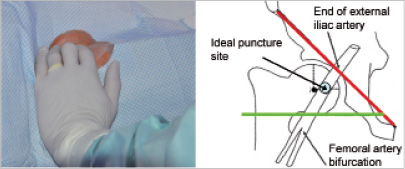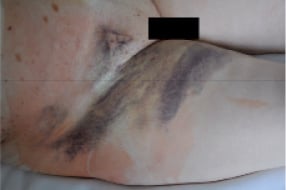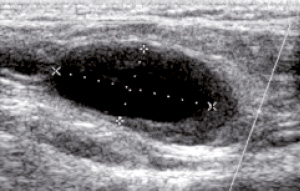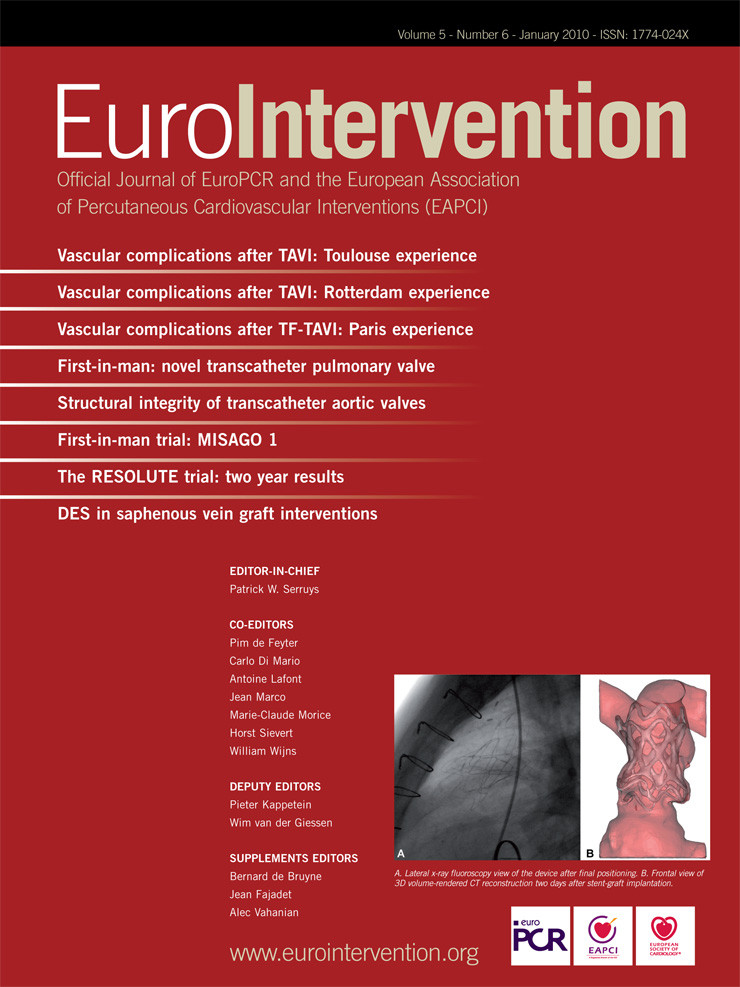Introduction
This is the third article in the EuroIntervention Tools & Techniques series and deals with the femoral artery puncture for percutaneous coronary intervention. The following is an overview of its management and highlights the salient technical features to be covered in the online version. The complete, unabridged chapter with dynamic angiographic images can be viewed at www.eurointervention.org
Background
Percutaneous puncture of the common femoral artery, remains today the primary vascular access for cardiac catheterisation. Either employing the Seldinger technique with special Seldinger puncture needles or, as currently commonplace, direct puncture via a common puncture needle can be applied. Nevertheless, in different countries as well as in different centers and even between operators the use of femoral, radial and brachial approaches for cardiac catheterisation and coronary angiography vary significantly.
Methods
This issue reviews the advantages and disadvantages of the femoral artery puncture. First, we describe the preparation setup, then we describe the puncture technique (Figure 1). Pitfalls, Tips & are also discussed. Finally some complications are presented (Figures 2, 3).

Figure 1. Femoral artery puncture.

Figure 2. Complications and management. Significant hematoma with swelling beyond the inguinal fold in a patient with post-cath compression bend, bleeding complications requiring blood transfusion. Bleeding was successfully stopped by a new more precise compression bend.

Figure 3. 1.03x2.08 cm pseudoaneurysm post cardiac catherisation via the femoral approach using a 6 Fr sheath. The pseudoaneurysm was successfully treated by local ultrasound guided compression and a prolonged compression bend for three days.

